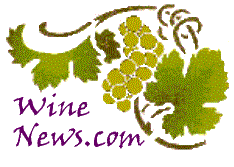A Gourmet Italian Experience
Welcome to "Da Felicin"
Felicin is a hotel and restaurant surrounded by the green of
Langhe, whose history unfolds alongside the Rocca family history. Three
generations taking care of a way of life in which the relationship between man
and land is essential, gives soul to a project of cooking as food culture.
Nino and Silvia, the last inheritors of the Rocca family tradition, welcome
their guests with the simplicity and straightforwardness of everyday life, to
let them “taste” a pleasant stay.
The Hotel is in the very heart of The Langhe, perfectly suitable for those who love to be surrounded by nature – and good food, for sure. Nino and Silvia offer you a relaxing stay, and will escort you to the discovery of a land rich in history and charm. Felicin’s history unfolds alongside the everyday work of people, passionately protecting an ancient philosophy of life, in which the relationship between man and land is essential, and gives soul to a natural project of mutual love and shelter.
Nino’s cuisine is built over a wide and long family tradition, but undergoing a ceaseless renovation, a day-by-day hunt for excellence. A tradition revisited, that will never forgo the quality of raw material: biologically grown vegetables and fruits, poultry and ducks from farm breeding, bovine meat and lambs of pure Piedmontese breed.
Then the “primi piatti”: from the very traditional “Tajarin” (fresh
pasta noodles) rolled out and cut by hand with a knife, to the “Raviolini del
plin” (small ravioli pinched with fingers) made to the true ancient Langa
recipe; or the red and white rice with mushrooms, vegetables and sausage, potato
“gnocchi”, or the most time-honoured vegetable soup.
Traditional main courses like the Barolo-braised veal shank, the roasted pork
collar, and the classical raw meat (cut down to pieces by hand with a knife, to
preserve its intense taste) are sometimes comforted or replaced by more unusual
dishes: Barolo braised veal tail, marinated and grilled eel.
The cheese trolley is offers a selection of the best from Piedmont, and some
interesting proposals from other areas of Europe. Cheese will be served with
homemade “cognà” and Langhe honey.
Last but not least, the desserts: the home speciality caramel “Giandujot”,
panna cotta, sorbets and fresh fruits meringues, and the Moscato zabajone with
corn-flour cookies.
The most appropriate counterpart to your menu can be chosen on the wide wine list, or directly visiting the cellar, whose extension has grown with the restaurant and enables the visitor to browse among the greatest wines of this area, and many rarities from the world. Nino's cellar is the home for over 30,000 bottles and not to be missed.
The Region
Monforte d’Alba is the last bulwark of the Langa of Barolo.
A small town rich in history: its origins can be traced back to the Roman times.
The name of the village carries the apparent martial meaning of “strong,
strategic spot” (Mons Fortis), and such it has actually been for centuries,
throughout the countless disputes between the local Signori and the libero
comune of Alba.
The ancient castle was subjugated in 1028 by Ariberto d’Intimiano, archbishop
of Milan, because it had become the safe haven and headquarters of Manichaean
hereticals, the Catari. Defeated and drawn to Milan, the Cathares refused to
disavow and were convicted to death by fire.
In the Low Middle Age, Monforte has been in possession of the Marquis of
Cortemilia, of the Comune of Alba, of Milan nobles Visconti and the Marquis Del
Carretto. Today the castle has become the stately home of the Marquis Scarampi
del Cairo. It’s been rebuilt many times starting from 1706 over the remainders
of the ancient fortress. The little piazza at the top of the hill overlooks the
charming village, and an amazing view of the Alps can be enjoyed.
The Langhe
Langhe, a very ancient name of unsure etymology: many possible
interpretations have been given, recalling words that mean “Ligurian town”
or “uncouth land” or even “land-tongues”.
The Langhe embrace a wide area of hills with sharp edges, by deep parallel
valleys, excavated by torrents, between the Tanaro River, the Ligurian Appennine
and the Bormida River. The average height is 550 metres, reaching 950 in
Mombarcaro, with a wide range of cultivations that vary with the land
conformation. Therefore, the different areas of the Langhe can be identified
from their specific precious products.
You then have the Langa of Barolo or Barbaresco, of Asti, the Langa of
hazelnuts, of woods and pastures; but virtually every row of hills, every narrow
valley has its own traditions and customs, different dialects; a small universe
concealing countless surprises, that can be unveiled only by living with these
people, with this nature.
Langa means contrasting landscapes, broad horizons punctuated by towers and
castles, the peacefulness of a silence only broken by the bleat of sheep and the
rhythm of farm tools. We suggest at least a week there to really see it
all, and experience some of Italy's top wines and amazing cuisine...like
"Da Felicin".
Our thanks to Nino, Silvia, Giorgio, Andrea, and the entire staff for a remarkable stay and awesome food.

Information and tips for finding end enjoying everyday wines from Europe and other major wine regions:
Search the Blogs
Copyright WineNews.com 2009

